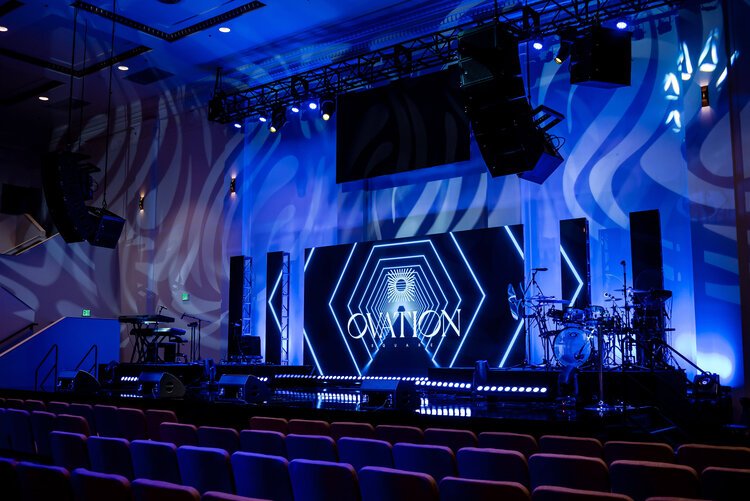Why Event Source Solutions Are Important for Smooth Event-Driven Architectures
In the world of contemporary software application development, event-driven styles are significantly prevalent, yet their efficiency hinges on the execution of robust occasion source solutions. As markets change towards real-time data handling, comprehending the effects of event sourcing comes to be essential.
Comprehending Event-Driven Styles
Event-driven styles (EDAs) represent a paradigm shift in developing software program systems, where the flow of information is figured out by the occurrence of events. This architectural style advertises a decoupled approach, permitting different elements to connect asynchronously. In EDAs, occasions function as the key methods of interaction, activating procedures or process in response to particular occurrences, such as individual actions or system modifications.
The key components of an EDA consist of occasion producers, which create occasions; occasion customers, which react to occasions; and occasion networks, which help with the transmission of occasions in between manufacturers and consumers. This structure boosts system responsiveness and scalability, as elements can separately process occasions without the demand for synchronous communication.
In addition, EDAs make it possible for real-time data processing, making them ideal for applications requiring instant understandings-- such as fraudulence discovery in financial systems or keeping an eye on IoT devices. They likewise sustain an even more active growth atmosphere, allowing groups to repeat rapidly and deploy new features with minimal disturbance to existing solutions.
The Duty of Occasion Source Solutions
While different components in an event-driven design rely upon reliable interaction, occasion source remedies play a crucial duty in creating and handling the flow of events. These options work as the preliminary factor of occasion production, catching adjustments in state or individual actions and equating them right into events that can be propagated via the system.

Moreover, they promote the decoupling of manufacturers and customers within a style, enabling systems to scale independently. This decoupling is important for enhancing system strength, as it decreases dependences that could or else lead to bottlenecks or solitary factors of failure.
Advantages of Real-Time Information Handling
Real-time data processing considerably enhances the abilities of event-driven styles by allowing immediate insights and actions based on the current information (your event source charlotte). This immediacy not only speeds up decision-making however additionally increases the significance and accuracy of those decisions. Organizations can react to occasions as they take place, reducing latency and boosting operational agility
One of the main benefits of real-time data handling is the ability to catch and assess data constantly. This assists in aggressive procedures as opposed to reactive responses, enabling organizations to expect patterns and find more information prospective problems prior to they intensify. For instance, in markets such as money or shopping, real-time analytics can determine fraudulent purchases or consumer habits modifications, allowing speedy interventions that mitigate risk and optimize client complete satisfaction.

Inevitably, the integration of real-time information processing into event-driven styles encourages organizations to harness the full potential of their information, driving innovation and affordable advantage in an increasingly dynamic More Bonuses market.
Enhancing System Interaction
Efficient communication in between systems is critical for the success of any event-driven architecture. Occasion source options promote this communication by providing a durable framework for recording and transmitting occasions in actual time. By systematizing just how systems produce and eat events, these services eliminate obscurity and foster interoperability, enabling disparate systems to collaborate perfectly.
Using event streams enables systems to respond quickly to adjustments, making certain that all components are straightened and notified. This responsiveness is essential in settings where timely information exchange directly influences decision-making and general system performance. Moreover, event source services offer mechanisms for event filtering, improvement, and directing, boosting the effectiveness of data circulation in between systems.
Additionally, by implementing a publish-subscribe design, occasion resource solutions decouple system components, enabling higher versatility and scalability. This decoupling implies that systems can go to the website progress separately, making it much easier to incorporate brand-new performances or change existing parts without interrupting total communication.
Future Fads in Event Sourcing


One more considerable pattern is the surge of cloud-native occasion sourcing solutions. These platforms utilize the scalability and flexibility of cloud framework, enabling companies to successfully handle and save substantial amounts of occasion information without the expenses of standard systems. This shift advertises greater access and cooperation across teams.
Additionally, the fostering of microservices architecture is affecting event sourcing techniques. As services increasingly segment their applications into smaller sized, independent services, event sourcing gives a durable device to maintain data consistency and stability across these dispersed systems.
Conclusion
In conclusion, occasion source services serve as a critical foundation for seamless event-driven designs, enabling reliable event generation and administration - your event source charlotte. The benefits of real-time data processing and enhanced system communication highlight the importance of embracing occasion sourcing methodologies.